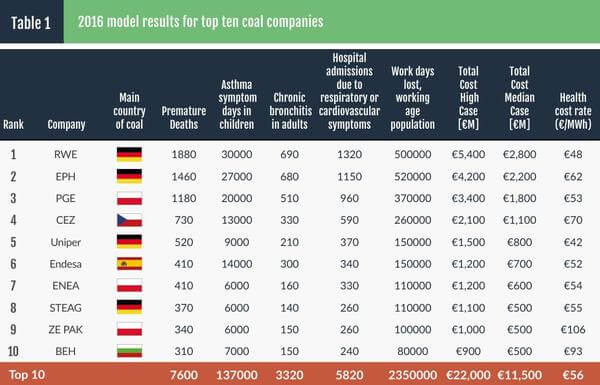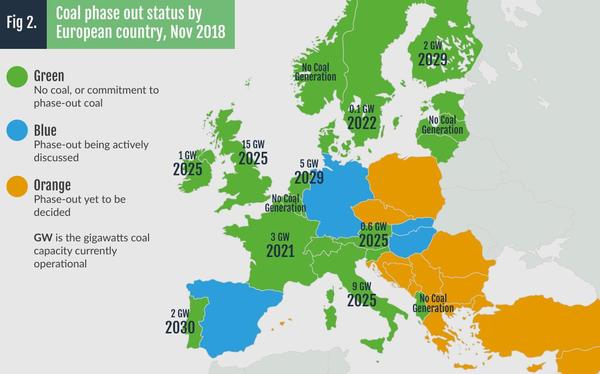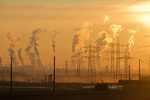News Release from windfair.net
Wind Industry Profile of
Germany: Safe Haven for Coal Companies
Coal-fired power plants as air polluters
There are still 103 companies operating coal-fired power plants in the EU, as the new study 'Lasp Gasp' by various environmental initiatives, including Greenpeace, shows. In 2016 alone, ten of them caused two-thirds of all health damage from coal-fired power plants with their facilities. In addition to the climate-damaging CO2, which is responsible for a large part of global warming, coal-fired power plants emit various other harmful substances such as particulate matter, sulphur dioxide or nitrogen oxides, as well as mercury and other toxic heavy metals.
Four of the ten largest polluters are located in Germany: the energy group RWE ranks first, followed by EPH, the current operator of the former Vattenfall power plants in Lusatia in eastern Germany. The fifth place goes to Uniper, the group that emerged from the spin-off of E.ON's power plant division. Steag, headquartered in Essen (Germany), occupies the eighth place.

The top 10 largest coal companies in Europe in 2016 (Image: Greenpeace)
The combined health damage of these four companies corresponds to a model value of 4,220 premature deaths, 72,000 days during which children show asthma symptoms and over one million days of illness. At the same time, this results in economic losses of up to 12 billion euros per financial year.
"RWE and other coal companies act twice as ruthlessly," Greenpeace spokesman Christoph Lieven states. "While their power plants earn money by destroying the climate, they make the population pay for asthma cases, heart attacks and diabetes.
German dominance due to political failure
The reasons for the German dominance in this list are manifold. On the one hand, Germany alone is responsible for 36% of all coal-based electricity generation in the EU. On the other, the high population density in Germany ensures that many people live in the immediate vicinity of the power plants and are directly exposed to air pollution. For example, 46 million people live no more than 200 km away from RWE lignite-fired power plants.
German politicians are to blame, too, because in recent years there has been little progress in adjusting the limit values for air pollution. Although in the past German power stations were often cleaner than those in other countries, in recent years their neighbours have caught up with environmental regulations. Germany's limit values are now on a par with Poland or the Czech Republic, both known throughout Europe for their coal affinity.
Coal phase-out delayed
Other European countries are already further down the road when it comes to phasing out coal. The UK and France, for example, have announced concrete dates for their withdrawal. Both Spain and Germany are discussing this at the moment. Meanwhile, the German phase-out would send an important signal to other countries. At the moment, however, initial information from the Coal Commission raises fears that the phase-out plans are far too hesitant.

Status of coal phase-out in the individual European countries (Image: Greenpeace)
Concrete receivables are reported according to
The study concludes, among other things, that governments must adopt guidelines to ensure that coal-fired power plants are decommissioned by 2030. But there are also demands on companies. These include an immediate halt to investment in hard coal and lignite and a commitment to decommissioning all those power plants by 2030. Only then would a successful, socially acceptable transition be possible. This would'nt only help the environment, but also the people.
- Author:
- Katrin Radtke
- Email:
- press@windfair.net
- Keywords:
- coal, Greaanpeace, study, phase-out, Germany, coal company, industry, air pollution, health damage, power plants



























